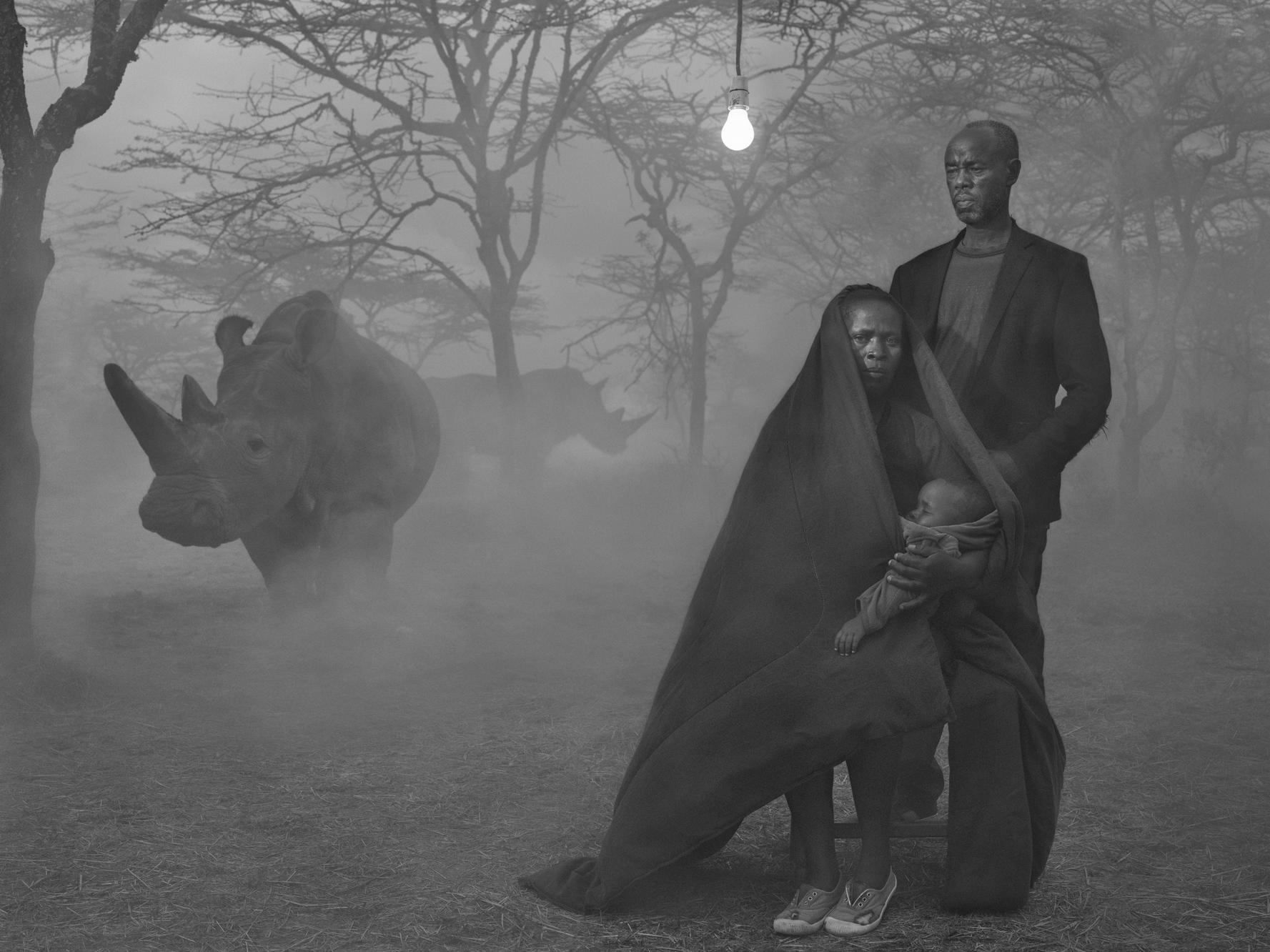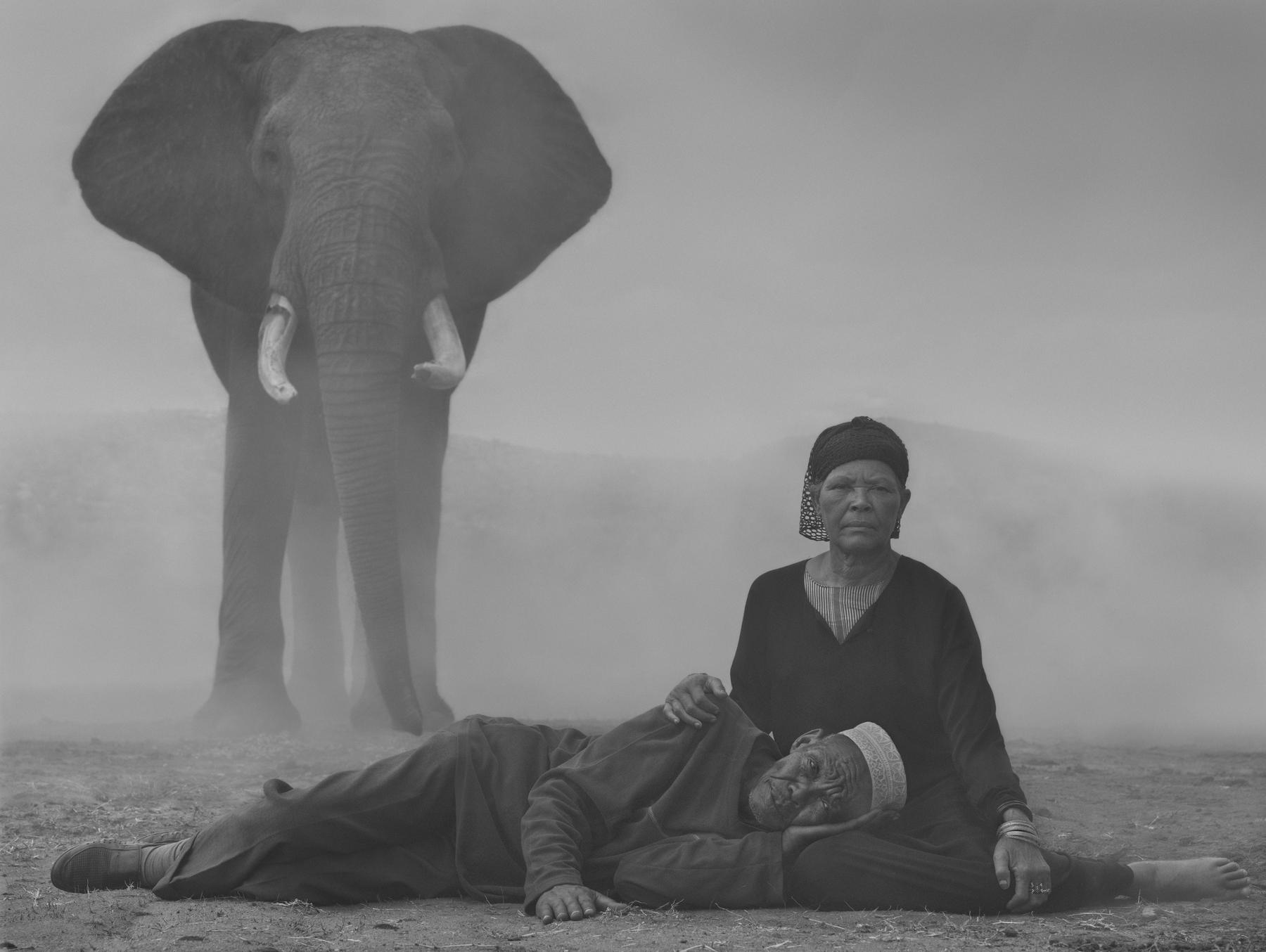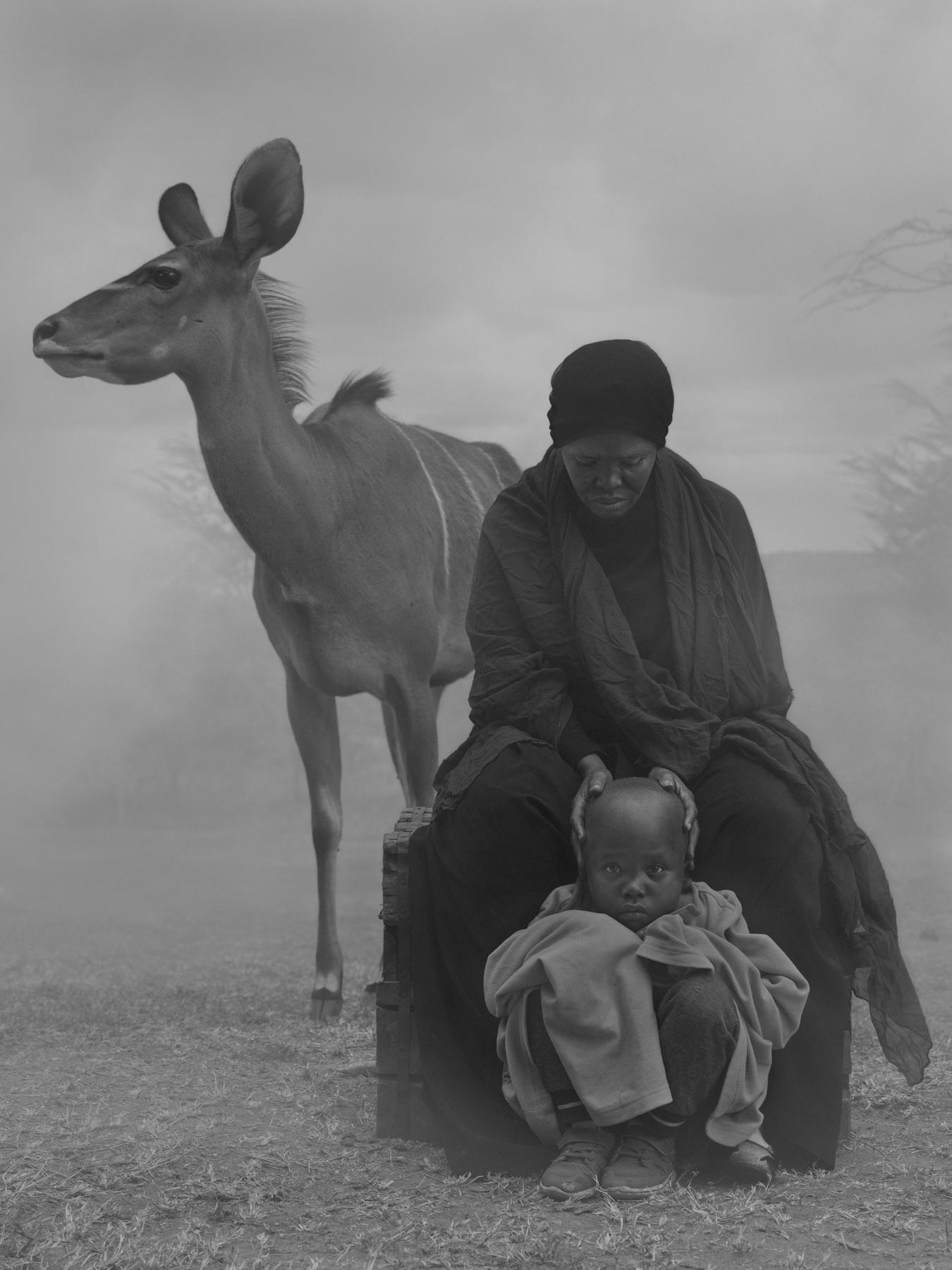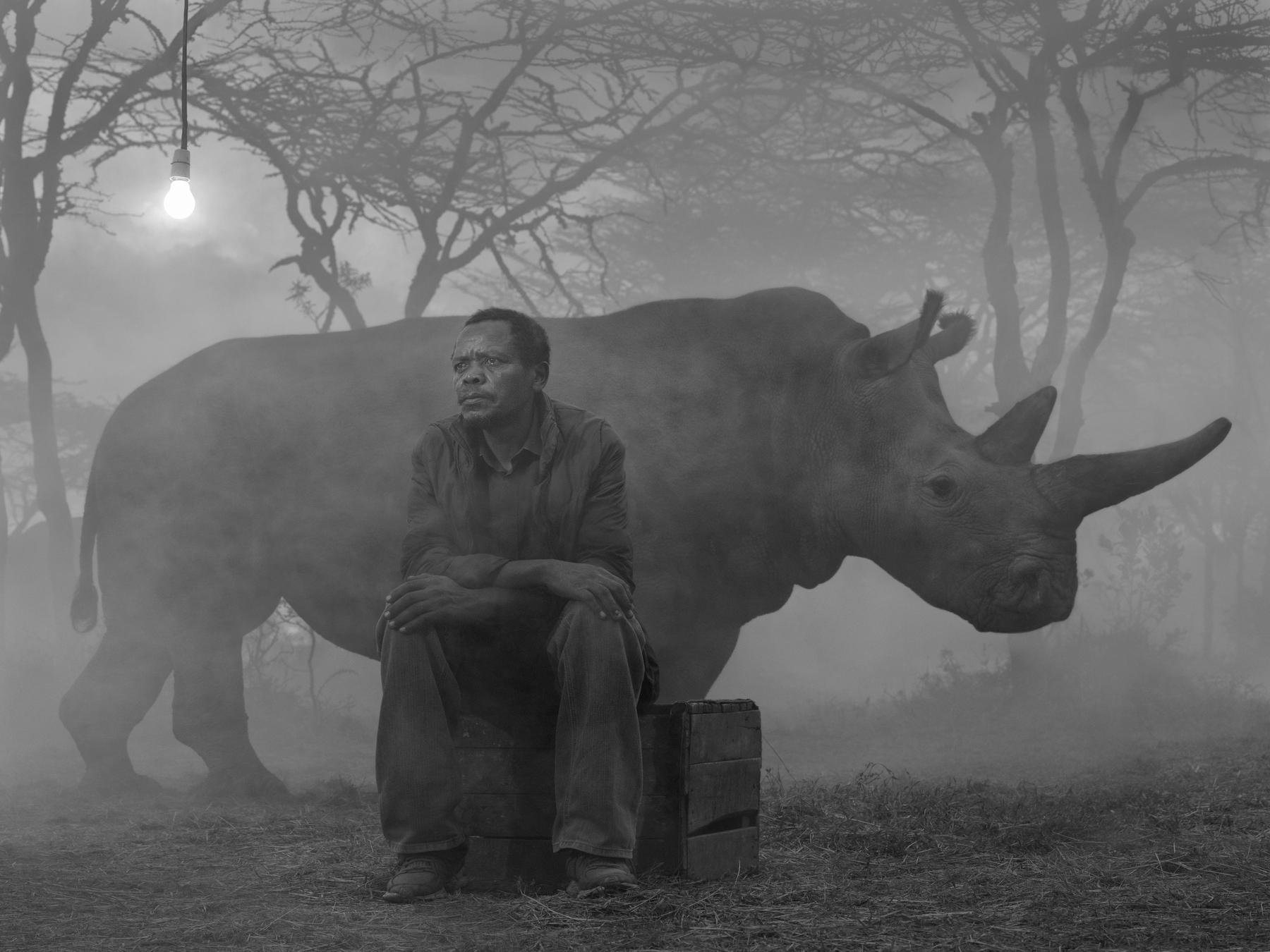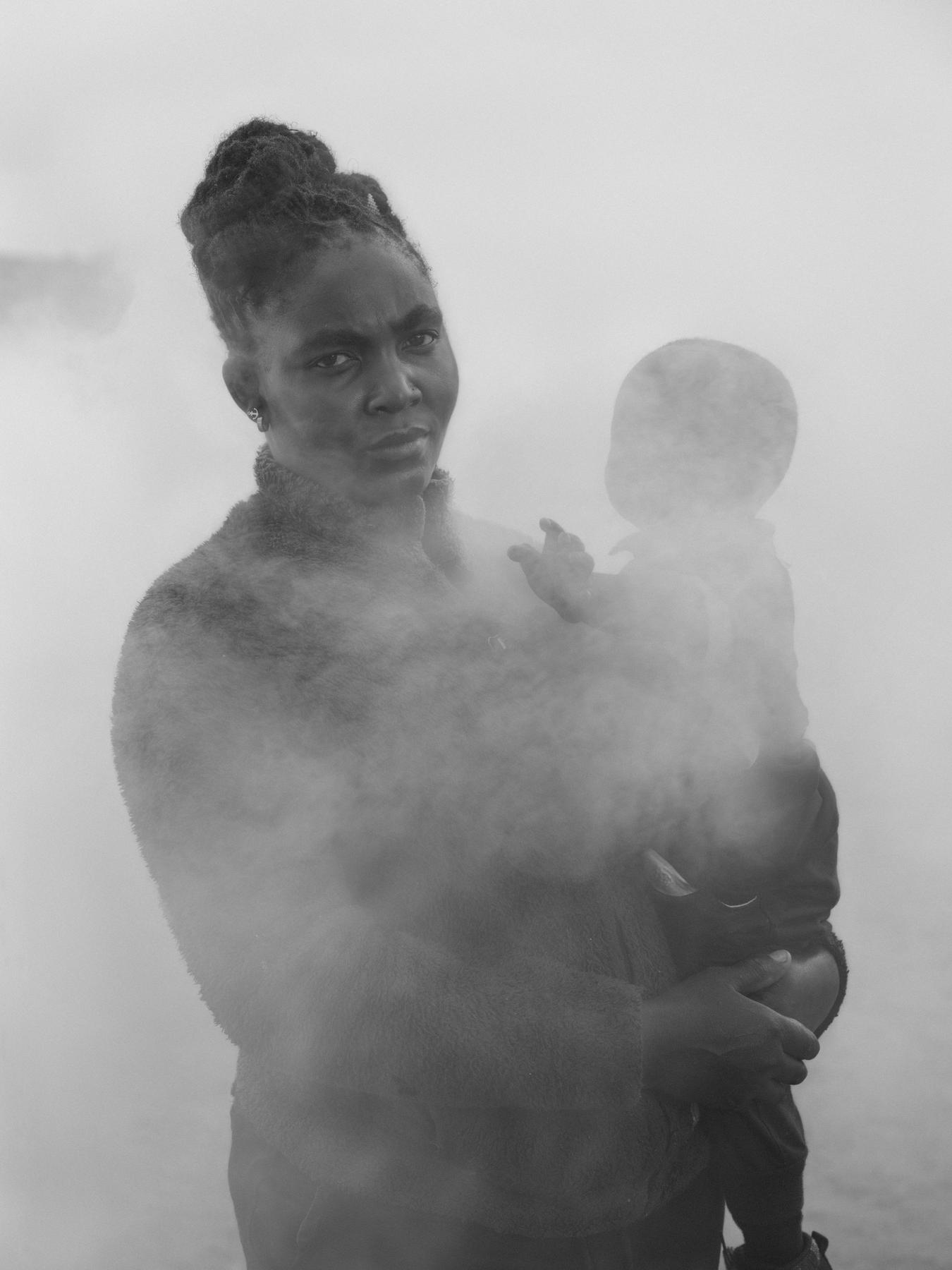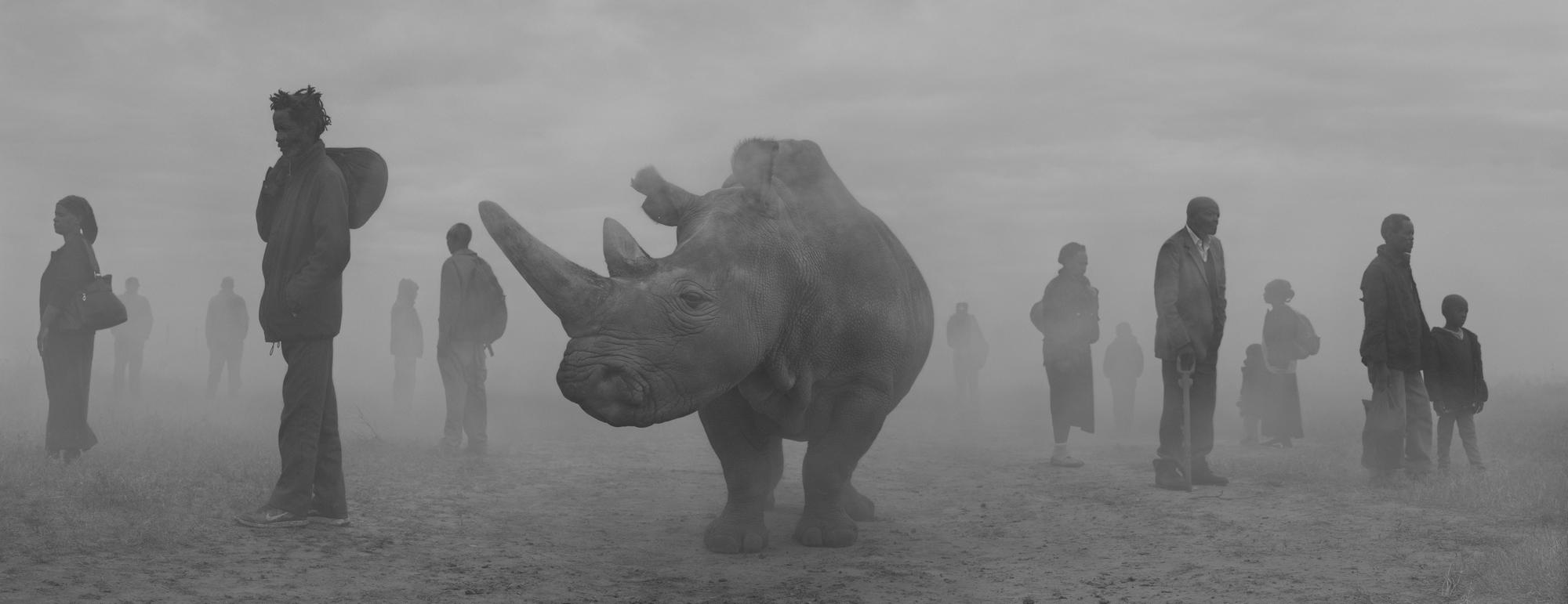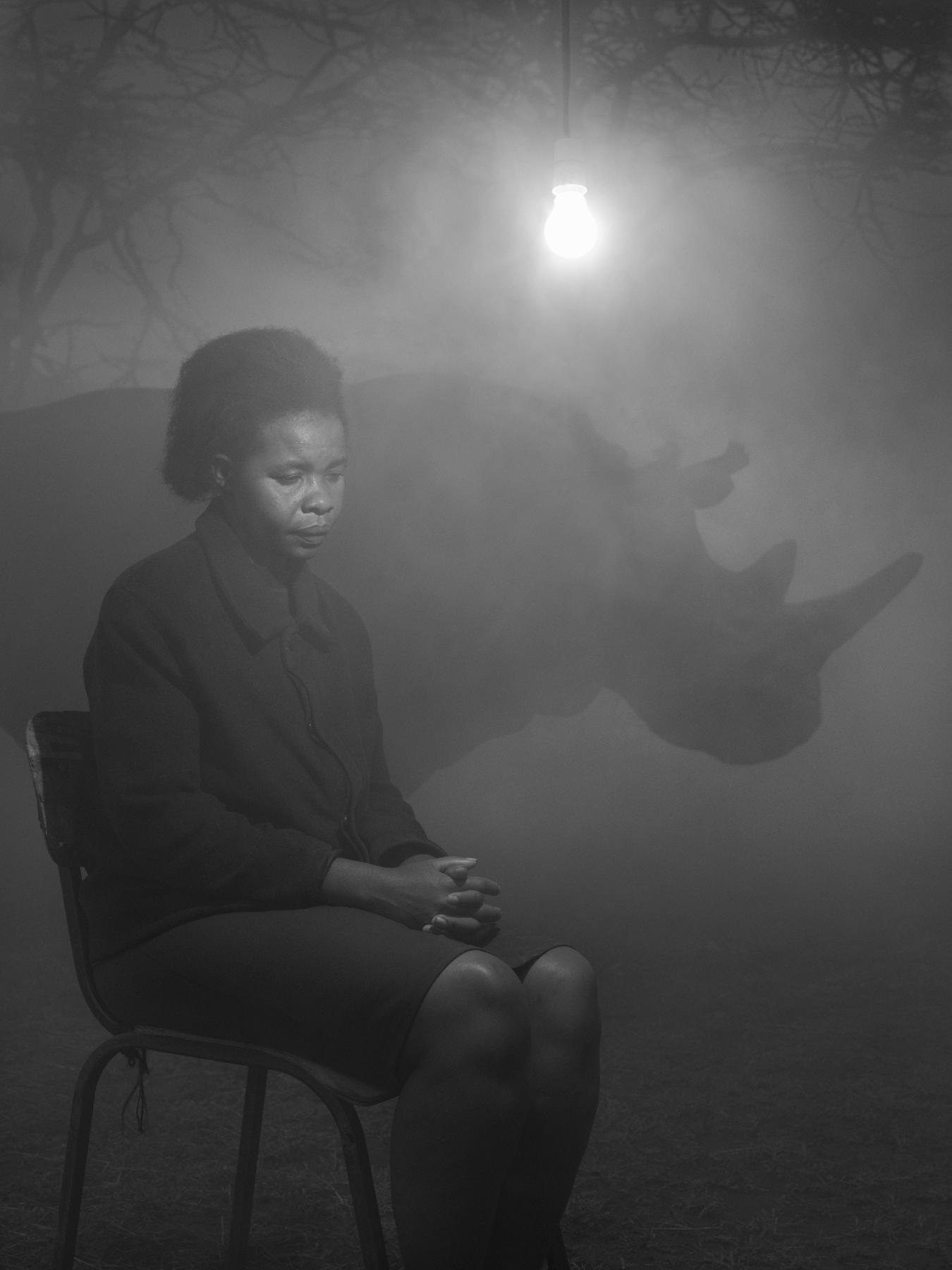Kenya holds dense stores of carbon — from Mount Elgon on the western border with Uganda, to Mount Kenya, the Loita and Chyulu Hills forests in the south, and the coastal mangrove forests. The health of these ecosystems is closely tied to the wildlife that inhabit them. Elephants and rhinos, for example, play a central role in spreading seeds and regenerating forests. But poaching and habitat destruction threaten to unravel this balance.

“Irrecoverable carbon” refers to the vast stores of carbon in nature that are vulnerable to release from human activity and, if lost, could not be restored by 2050 — when the world must reach net-zero emissions to avoid the worst impacts of climate change. Learn more about this critical research.
These images were licensed from Nick Brandt’s series, The Day May Break, and were photographed at Ol Pejeta and Ol Jogi conservancies in Kenya in 2020. Brandt’s series brings refugees — both humans and animals — together in the same frame. There’s no digital trickery; the subjects share the same space, at the same time. Because the animals are rescues, they’re used to being near people.
Among the portraits are northern white rhinos Najin and Fatu, a mother and daughter pair who are the last two remaining individuals of their species. Though the species is functionally extinct, scientists are trying to revive the northern white rhino through in vitro fertilization.
